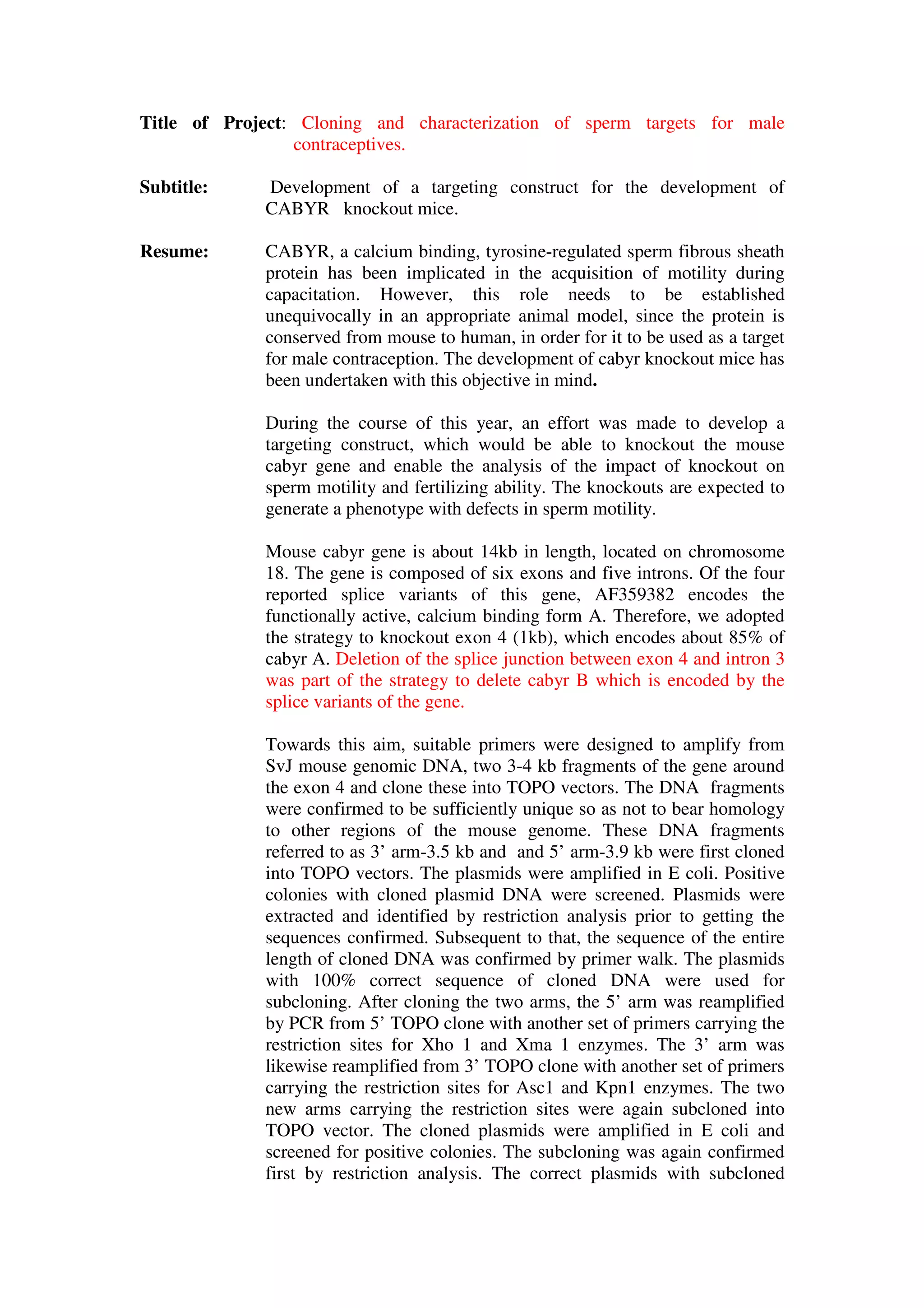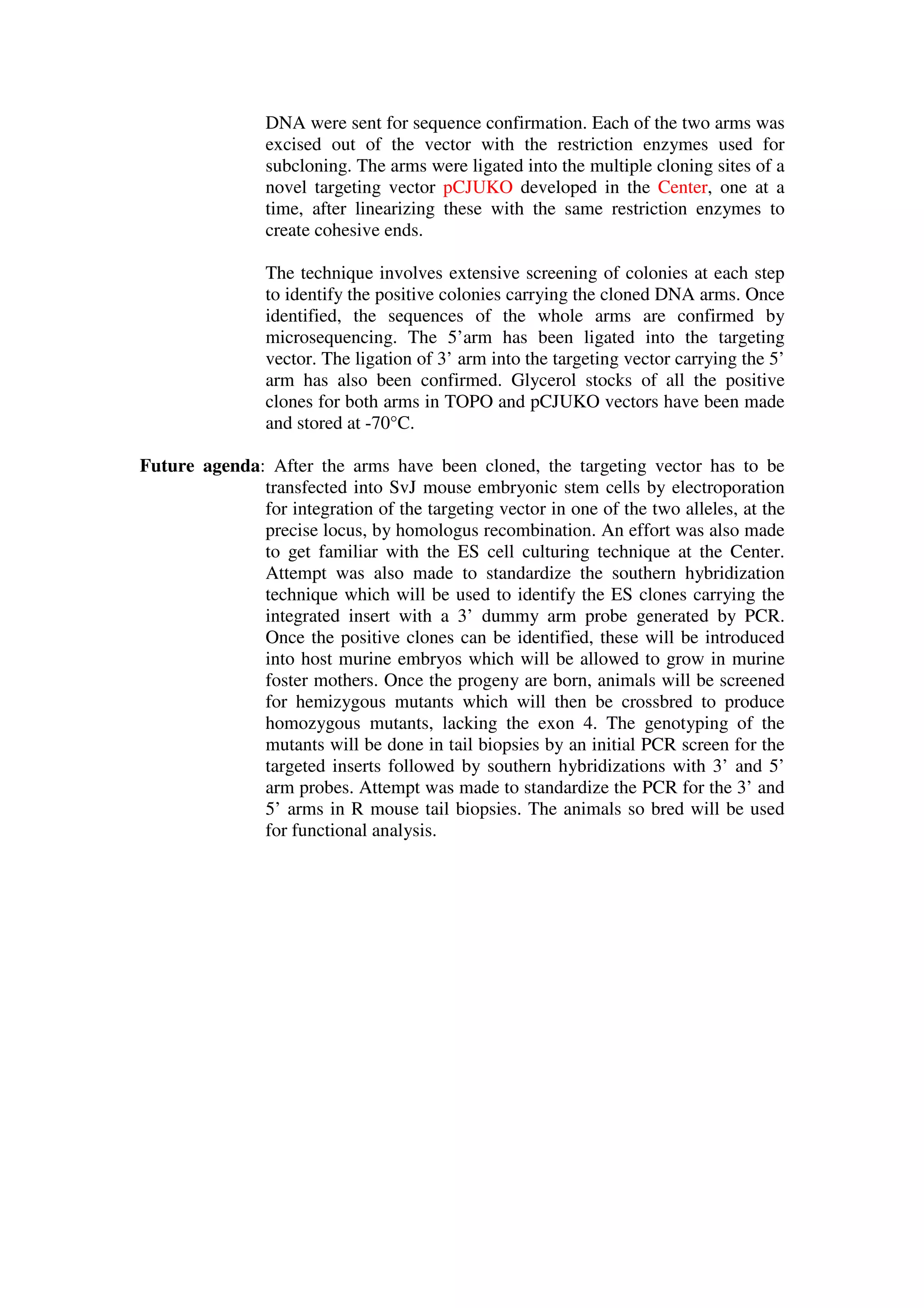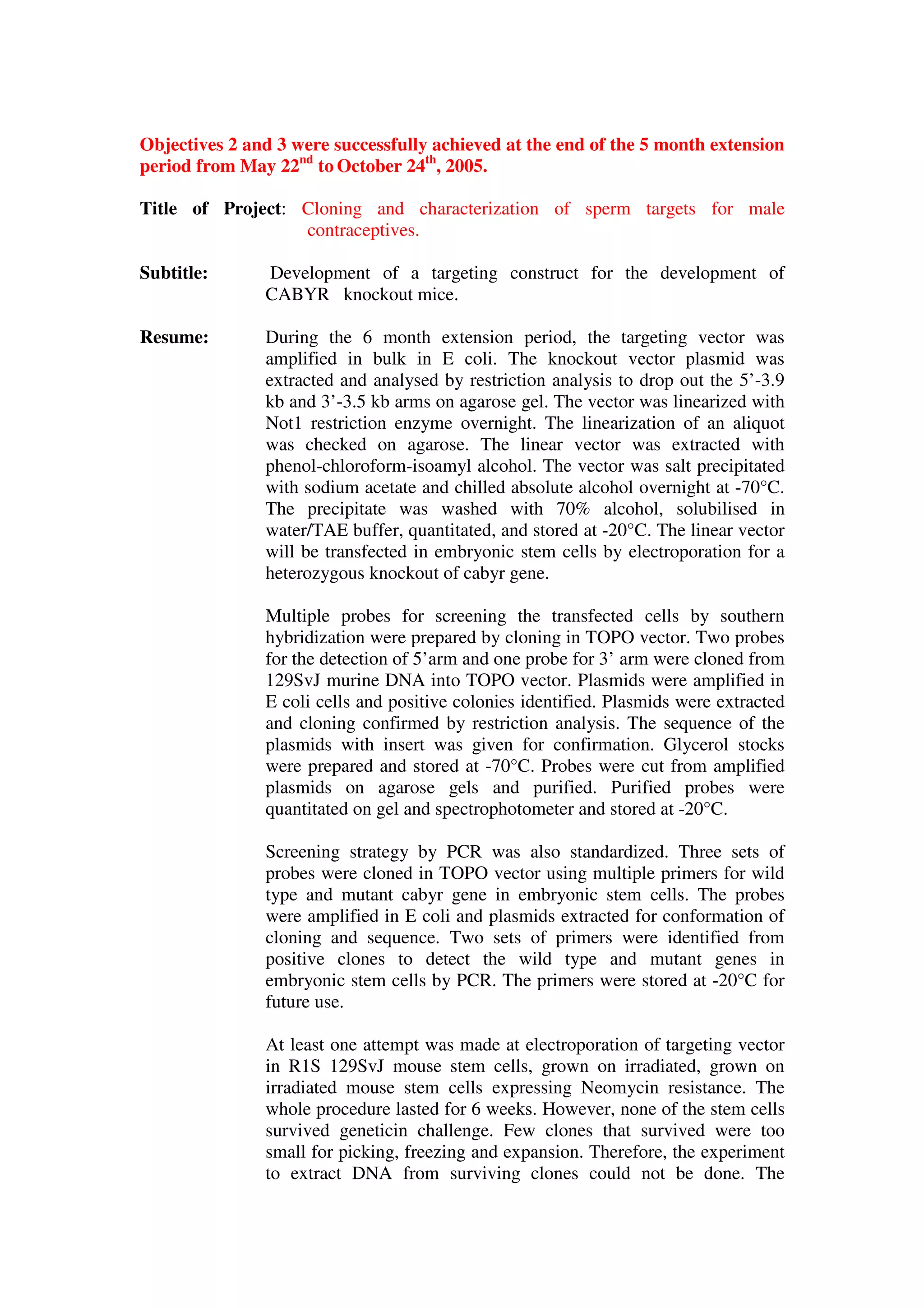Dr. Manjeet K. Sharma conducted research from May 2004 to October 2005 at the University of Virginia under an NIH Fogarty International Fellowship. The goal was to develop a gene targeting construct to knockout the mouse Cabyr gene, which codes for a calcium binding sperm protein, in order to study its role in sperm motility and develop it as a target for male contraception. By the end of the fellowship period, Dr. Sharma had successfully cloned the 5' and 3' arms of the Cabyr gene into a targeting vector. Electroporation of the targeting vector into mouse embryonic stem cells was attempted but was unsuccessful. Further work would be needed to generate Cabyr knockout mice.




